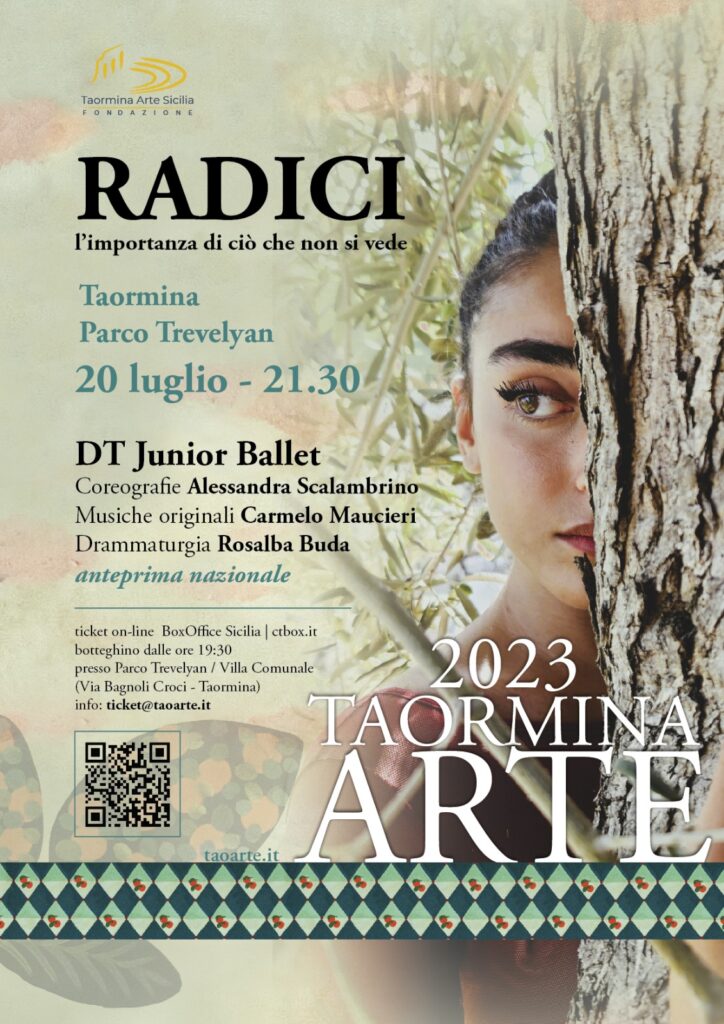
Radici: l’importanza di ciò che non si vede
DT Junior Ballet
Choreography: Alessandra Scalambrino
Original Music: Carmelo Maucieri
Dramaturgy: Rosalba Buda
National Premiere
On Thursday 20 July, the new dance show by the DT Junior Ballet company makes its national premiere at the Taormina Arte Festival, with choreography by Alessandra Scalambrino, original music by Carmelo Maucieri and dramaturgy by Rosalba Buda.
The natural setting that will host “Roots: The importance of what is not seen” will be Trevelyan Park, the place par excellence for a concept created on the metaphor of human existence, symbolized precisely by the tree, retraced in a journey that starts from the Greeks to the modern world.
“Just like the human being,” says Rosalba Buda, “a tree is born, grows, produces fruit and, at the same time, is also the emblem of a positive future based on stable roots that represent the model of bond with the origins and with instincts. If the ground constitutes the structure or the surrounding world, the foliage and the many leaves represent a life that can be intense, rich, growing: it was this syncretism that prompted us to recover, in this age of non-respect for the environment and through gestures and the step of the dance, an ancestral atmosphere that claims both our belonging and the need for protection and comfort to Nature, the divine archetype. The meaning of trees and plants – he continues – is being lost in our modern world now dominated by man, technology and progress. We should remember that trees arrived before us, that nature exists only for itself and ignores our “tangled humanity” which more often than not seems to harm it rather than do it any good”.
“Among the many direct and indirect languages that man uses to express himself and to communicate – adds Alessandra Scalambrino – dance occupies a fundamental place and increasingly knows how to approach other forms of expression and to bond with them in alternative places to the stage, changing its spatial perception. Contemporary dance therefore becomes a tool for getting to know and re-reading the spaces of the city, and a generative engine for new encounters open to citizens of different interests, cultures and generations. Among all, one place that traces this multicultural identity is precisely the Villa Comunale which, with its plants, a melting pot of aesthetics bearing distant worlds, is a natural container of beauty as well as history.
The transcendence of the tree, constantly embodied over time, is connected to its history by its very roots, its humblest and most hidden part, from which the tree cannot be separated because it would cease its life. The same goes for man; his word is first of all deep research into one’s being: it cannot be born in the chaos that bounces off walls or in the psychedelic noise of everyday life. It must be sought in the profound silence of the ego, in one’s roots without which he cannot live his aspiration towards the heights, in the desire to have to fully realize his form, to become a perfect and complete entity”.




